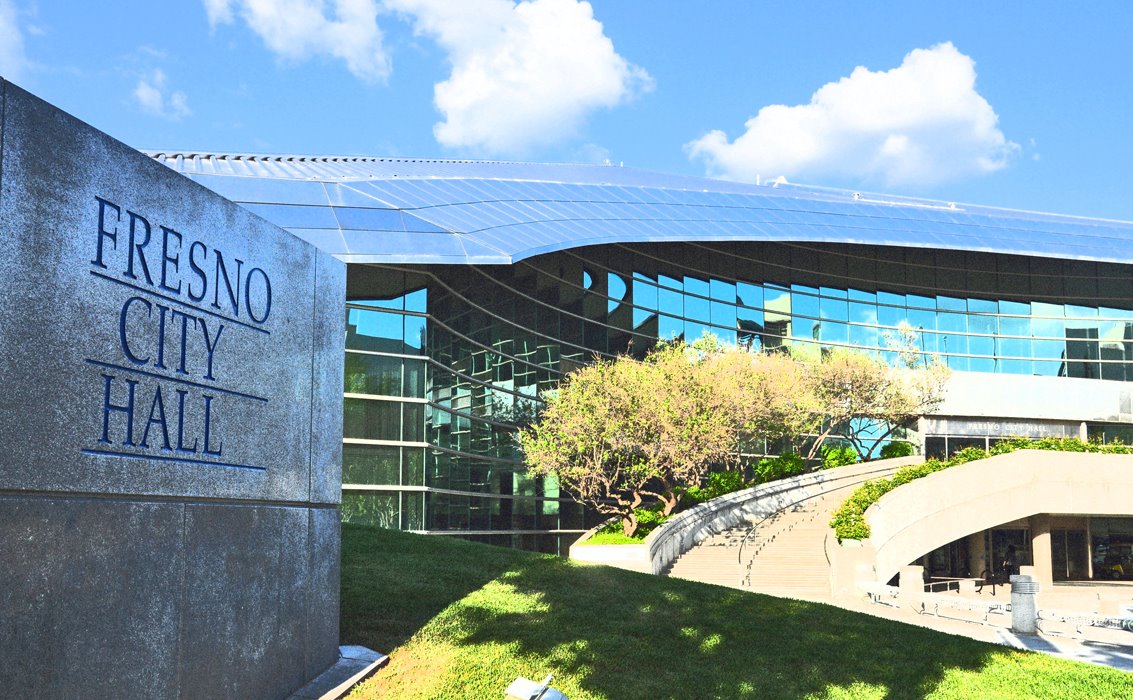The next round of proposed hikes to Fresno’s utility bill is here.
The proposal and its timing mean Fresno voters leading up to the Nov. 6 general election will have a greater than usual level of policy-making responsibilities.
The City Council on Thursday, October 11th will be asked to approve beginning the Proposition 218 process for higher rates for water, wastewater and solid waste services.
According to Department of Public Utilities documents, the typical single-family home currently pays a total monthly bill of $96.86. That’s for the 2018-19 fiscal year, which concludes the current five-year rate plan.
Breaking that bill down, the typical house currently pays:
- $45.74 for water,
- $25.75 for wastewater (sewer) and
- $25.37 for solid waste (trash collection).
Five-year utility bill proposals can get numbers-heavy in a hurry. I’ll try to give you only the basics.
The typical overall bill in FY 2020 would go down slightly – from $96.86 to $96.73. Water would remain unchanged (keep in mind that the water bill is based in part on consumption; the more you use, the more you pay). The wastewater charge would drop by nearly 5%. The solid waste charge would rise by a bit more than 4%.
Starting in FY 2021, the typical overall bill would grow every year for four years. The typical house’s monthly utility bill would be $102.42 in FY 2021, $108.67 in FY 2022, $114.39 in FY 2023 and $118.35 in FY 2024.
That means the typical overall monthly bill would grow 22.2% between FY 2019 and FY 2024.
Looking at the individual services, the typical monthly water bill would grow 28.9% between FY 2019 and FY 2024.
The typical monthly solid waste bill would grow 33.7% between FY 2019 and FY 2024.
The typical monthly wastewater bill would actually drop slightly over that period, going from $25.75 in FY 2019 to $25.50 in FY 2024.
Each service would see changes during just about each year of the new five-year billing cycle.
What would all this extra money buy? The first thing to keep in mind is Sacramento. Laws impacting resource conservation/protection are coming from the halls of power all the time. Such laws are always expensive for those at the end of this chain – ratepayers.
Utility payments fund operations and debt service, of course. Let’s concentrate here on capital projects, as outlined in DPU Director Mike Carbajal’s report to the council.
The Water Division under the proposed 5-year rate plan would spend $62.8 million on water main renewals, $41.1 million on water wells/pumps and $16.4 million on things like recharge basins (hooray!) and data systems.
The Wastewater Division needs more money for system repairs, replacements and upgrades. Capital projects include $21.7 million for treatment capacity expansion.
The Solid Waste Division (trash collection for single-family homes) proposes to invest $28.4 million in collection vehicles and $3 million in collection containers.
The Solid Waste Division plan gives Carbajal the perfect opportunity to propose a change in the city’s subsidy for certain ratepayers.
Proposition 218 is often shorthand in City Hall debate for a section in the state Constitution that, in effect, requires utility rates for each customer class to reflect the true cost of providing that service. Public Utilities currently has in place modest Senior Citizen rate discounts for solid waste and wastewater services.
As I understand it from Carbajal’s report, eligibility for both discounts is not based on means (the poor get them, the affluent don’t). Eligibility is based solely on Senior Citizen status. Also, the subsidy is simply a reduction in the bill. If, as Proposition 218 requires, Public Utilities can charge no more (and no less) than the cost of providing the service, and a portion of those payments is returned to a favored segment of the customer base through lower bills, then other ratepayers must make up the difference. The latter in this scenario are paying more than their fair share for the service (if I understand things correctly).
This, apparently, would not pass Proposition 218 muster.
On the other hand, the City Council and Public Utilities during the drawn-out debate over the Recharge Fresno rate structure in 2014-2015 created a ratepayer subsidy program for residential water customers that does pass muster with the state Constitution. Long story short, this program is means tested and funded with fines, not ratepayer funds. (I think the key here is no ratepayer funds rather than means testing).
To set the Constitutional matters straight and do right by Fresno’s financially disadvantaged utility customers, Carbajal proposes the Utility Affordability Credit Program. Again, long story short, the city would find $1 million in non-ratepayer funds to help reduce the hit to Fresno’s poorest utility customers as the new rate structure takes effect. (I apologize, Mike, but it’s not clear to me if the current water subsidy would be folded into the new UACP subsidy, or there would be two separate ratepayer subsidies on the books.)
As Carbajal makes clear in his report, Thursday’s hearing is the start of a process with Proposition 218 at its heart. And at the heart of Proposition 218 is ratepayer sovereignty – voting.
Carbajal’s recommendations to the Council go like this (if I understand them correctly):
- Council and the public debate his proposal as long as needed on Thursday. The council then directs staff to begin the Proposition 218 process in earnest.
- Proposition 218 notices are mailed to ratepayers (I think we’re talking parcel owners) no later than Oct. 22. These notices explain what’s going on. These notices tell ratepayers what to do (if anything) if they support the plan. These notices tell ratepayers what to do if they protest the plan.
- The City Council conducts a formal Proposition 218 hearing on the five-year rate structure/spending plan on Dec. 6.
- If a majority protest is not received, the council on Dec. 6 votes on the five-year rate/spending plan.
- If the council gives everything a thumb’s up, the new rates takes effect on July 1, 2019.
All this effort, Carbajal writes in his report, is being done to “ensure utility rates adequately and efficiently fund the ongoing delivery of the essential services provide by DPU and accurately and proportionally reflect the City’s costs of service.”
I look back on what I’ve written in this blog and think: “Boy, that’s a lot for the reader.” And you know what? If the Recharge Fresno ratepayer debate taught Fresno anything, it’s that utility rate hikes are much more complex than what I’ve suggested so far.
And much more interesting.
For example, I’ve left until the end one of Carbajal’s most innovative ideas. He says it’s time for Fresno to build a campus (my word, not his) that would be home to substantial portions of DPU’s Water, Wastewater and Solid Waste divisions.
The cost: An estimated $54 million. The location: 20 acres next to the new Southeast Surface Water Treatment Facility on Floradora Avenue between Fowler and Armstrong avenues. The facility’s working name: Administration and Maintenance Facility (need to work on that, Mike).
As it stands now, Carbajal writes in his report, too many parts of DPU operations are scattered around town. Some of the Water Division is in a cubbyhole near Euless Park/Fresno City College. The Solid Waste Division is in an increasingly crowded City Yard on G Street. It’s a City Yard that is nearing its 40th birthday, Carbajal writes. Fresno, with a population of more than 525,000, has more than doubled in size since the City Yard was born.
“As the city has grown and the need to expand services over a larger footprint as well as population has increased, the need for adequate fleet maintenance, vehicle storage, and office space has become evident,” Carbajal tells the council.
Carbajal adds: The 20-acre campus “would contain administrative, operations, warehouse, storage and staff facilities; and would include vehicle and equipment parking areas for the water and solid waste fleet. A vehicle fleet maintenance facility would also be constructed to support Water, Solid Waste, and Wastewater Management Divisions.”
Such a $54 million campus/facility, located right next to the $162 million SE surface water treatment plant, is almost certain to be fodder for intense council and ratepayer review. It sounds like a good idea to me. But why spend $54 million for such an impressive facility in what is now a largely rural area if the main idea isn’t that Fresno in the 21st century is destined to grow mainly toward the southeast?
And that brings us full circle back to the start of this blog: Fresno voters.
If the council decides to proceed with the Proposition 218 process, then Fresno voters who also are ratepayers/parcel owners must decide if they want to pay more for services and projects designed to make Fresno a better place to live and a more competitive city on the national and international scene (infrastructure counts).
Fresno voters (many of whom are utility ratepayers/parcel owners) on Nov. 6 must decide whether to say yes to Measure P, the three-eighths-cent sales tax hike that would raise tens of millions of dollars annually over its 30-year life for parks and arts.
Fresno voters on Nov. 6 must decide whether it might be wiser to say no to Measure P and embrace Mayor Lee Brand’s idea of sales tax measure at a later date that would generate funding for public safety services as well as parks.
And Fresno voters on Nov. 6 much decide via Proposition 6 whether to help repeal or help leave in place a state gas tax that already is sending millions of dollars to Fresno and Fresno County for road improvements and could be a vital source of funding for a Veterans Boulevard project that is the only hope for the West of Highway 99 area to successfully compete in the coming decades with a Southeast Growth Area/Reverse Triangle that already is home to thousands of new jobs and may soon be home to a new Public Utilities management/operations campus.
Democracy isn’t easy. I predict Thursday’s hearing will prove it.









